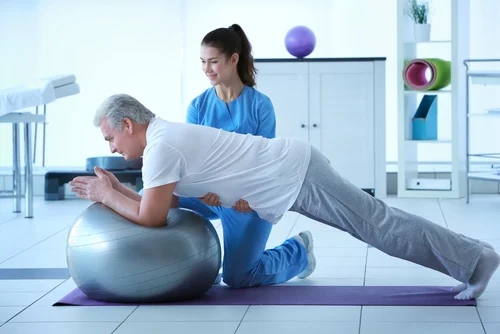There are many situations that lend themselves to rehabilitation. From recovering from an injury or a major illness to overcoming an addiction or rebuilding after a natural disaster, the need for therapeutic treatment and recovery services is ever-present. As such, there is now an array of rehabilitation techniques available designed to meet different needs in different contexts. Let’s explore the main types of rehabilitation, discussing what they involve and how people can benefit from them.
So whether you’re looking for tailored support with physical therapy following surgery, improved mental health through counseling sessions, or any other type of help, read on to find out more about the life-changing impact each form of rehab can have. And If you need any more clarity concerning rehabilitation, redirect to Pacific Ridge. They will answer all your questions.
Contents
Substance Abuse Rehabilitation
Substance Abuse Rehabilitation is a type of rehabilitation aimed at treating individuals who have fallen victim to addiction and substance abuse. It is a comprehensive program that combines medical, psychological, and behavioral interventions to help individuals overcome their addiction and regain control of their lives.
This type of rehabilitation is typically provided in specialized facilities or clinics that are staffed by trained professionals. These professionals work together to provide a wide range of supportive services, including detoxification, counseling, behavioral therapy, group therapy, and medication management.
During the Substance Abuse Rehabilitation process, patients undergo a rigorous program that involves daily routines and intense personal reflection. They attend counseling sessions where they discuss their struggles and the history of their addiction. These sessions help patients identify the underlying issues that led to their addiction and teach them coping strategies to manage and overcome their addiction.
Cognitive Rehabilitation
Cognitive Rehabilitation is a type of rehabilitation that focuses on restoring the cognitive functions of individuals who have suffered injuries, illnesses, or disabilities that have impaired their cognitive abilities. This type of rehabilitation seeks to improve the patient’s awareness, memory, attention, problem-solving abilities, and other cognitive skills that are essential for functional and independent living.
Cognitive Rehabilitation is designed to help people who have experienced:
1. Traumatic Brain Injury (TBI)
2. Stroke
3. Multiple Sclerosis (MS)
4. Alzheimer’s Disease and other Dementias
5. Parkinson’s Disease
6. Post-Traumatic Stress Disorder (PTSD)
7. Attention Deficit Hyperactivity Disorder (ADHD)
8. Autism
9. Learning Disabilities
10. Mental Health Conditions such as Depression and Anxiety
The goal of Cognitive Rehabilitation is to help individuals regain their independence, improve their quality of life, and reintegrate into their daily activities. Cognitive Rehabilitation therapy employs various techniques such as memory training, problem-solving, and executive function training. The therapy is tailored to each patient’s specific needs and challenges.
Speech and Language Rehabilitation
Speech and Language Rehabilitation is a specialized type of rehabilitation that focuses on improving the communication abilities of individuals who are struggling with speech and language impairments. This rehabilitation involves a comprehensive approach that incorporates various techniques and strategies to help individuals regain their communication skills.
Speech and Language Rehabilitation is often used in the treatment of a wide range of medical conditions that can affect a person’s ability to communicate effectively. For instance, individuals who have suffered from a stroke, traumatic brain injury, or Parkinson’s disease may experience language deficits that make it challenging for them to communicate with others.
Rehabilitation specialists work closely with patients to design personalized treatment plans that incorporate a variety of techniques, such as therapeutic exercises, communication strategies, and assistive technology. These exercises help improve the patient’s strength and coordination of the muscles used for speech, while communication strategies work towards increasing the individual’s vocabulary and understanding of language.
Assistive technology, such as augmentative and alternative communication devices, is also used to provide alternative methods of communication while the patient is undergoing rehabilitation. These assistive technologies can range from simple communication boards to sophisticated devices that utilize eye-tracking technology.
Occupational Rehabilitation
Occupational Rehabilitation is a type of rehabilitation that focuses specifically on restoring an individual’s ability to perform tasks related to their job or profession. This type of rehabilitation is tailored to meet the needs of each individual and aims to enable them to return to their previous level of work. Occupational Rehabilitation is often sought after by those who have suffered from an injury or illness that has affected their work performance. Additionally, it can also be used for those who suffer from disabilities or other health conditions that prohibit them from being able to perform their job duties effectively.
The process of Occupational Rehabilitation is a complex one and typically involves a team of healthcare professionals who work together to develop an individualized plan for each patient. This plan may include physical therapy, occupational therapy, and counseling to help the individual manage their condition and cope with their injury or illness. The goal of Occupational Rehabilitation is to help individuals regain strength, mobility, and flexibility, so they can effectively perform their work duties and return to their previous level of employment.
Depending on your situation, your medical provider may recommend one of the rehabilitation types we’ve discussed above.

